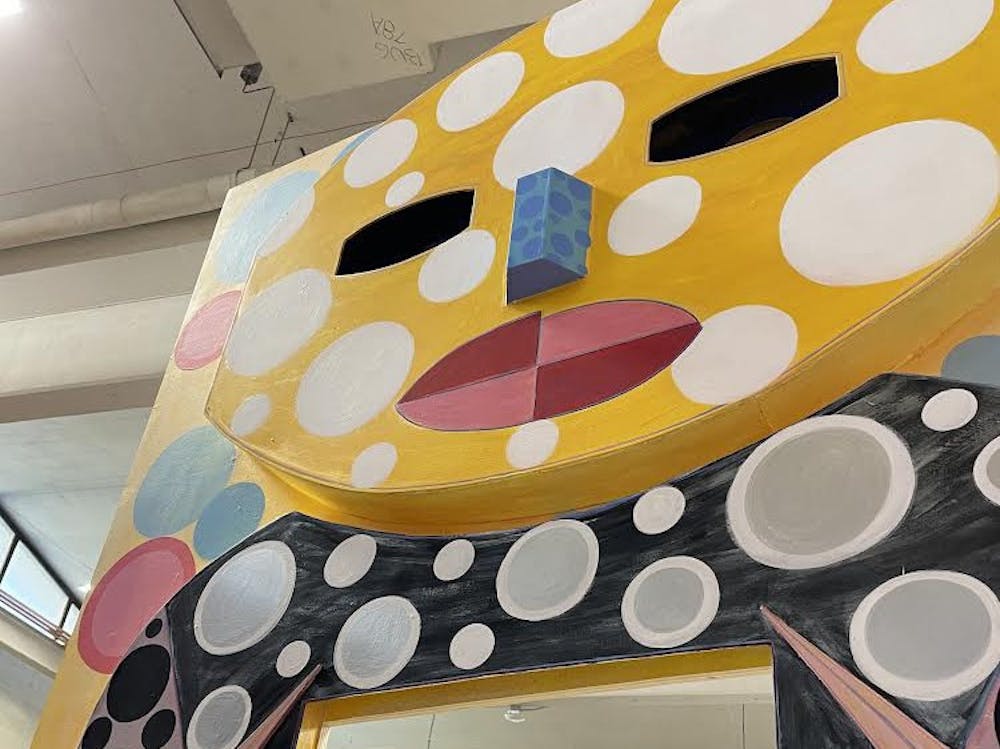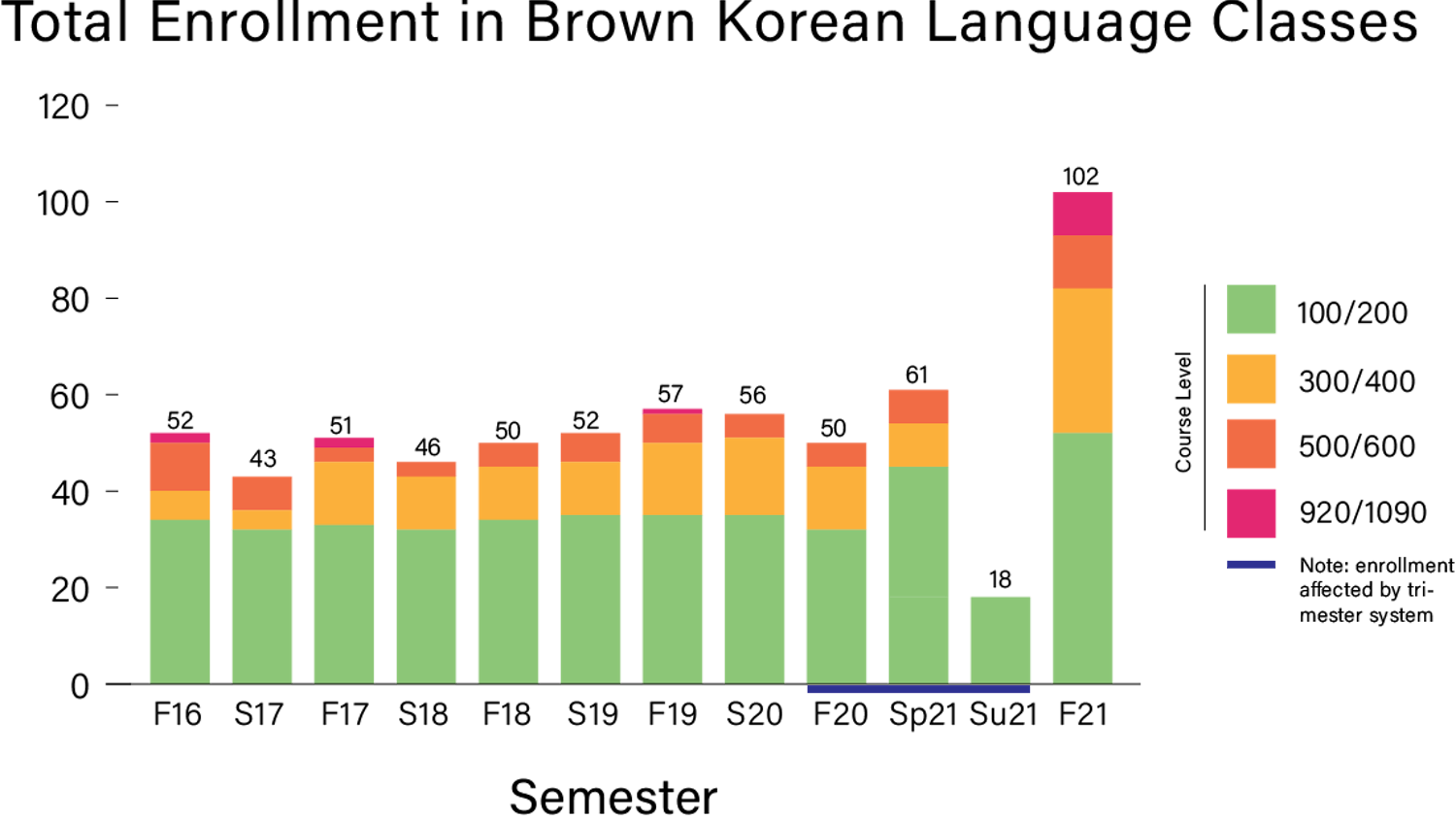“Help, stop, listen and think” appeared to artist Eva Goetz in a dream as robots’ warning to humanity.
Her concerns for the ethical dilemma of technology led her to teach the project-based, multidisciplinary course ENGN 1931U: “The Robots Are Coming! The Robots Are Coming!” Cross-registered in the engineering and computer science departments, the class is co-taught by Goetz and Professor of Computer Science and Engineering R. Bahar as a way to integrate engineering, computer science, art and ethics into a single course.
“There’s several parts of this class,” Bahar said. “There’s the art part, the thoughtful design part, the technical point of view, the mechanical part, the electrical part, the software part and then there’s this societal, ethical part that we’re pondering.”
Moved by her dream about robots, Goetz created her “Think A Bot It” art exhibition, which opened Dec. 14, 2019 in Portland, Maine. When Deb Mills-Scofield, advisory council member for Brown’s School of Engineering, saw Goetz’s exhibit in January 2020, she thought, “this is just so Brown.” She was determined to share Goetz’s art and ideas with students, introducing Goetz to Bahar. With funding from the Brown Arts Initiative, the computer science department, the engineering department and the Brown Design Workshop, Goetz and Bahar were able to make the course a reality.
Science Technology Engineering Art Mathematics “is endemic and inherent within Brown and in our world,” Mills-Scofield said.
The class distribution itself reflects a variety of interests. According to Bahar, the class is roughly equally made up of engineering concentrators, computer science concentrators and Rhode Island School of Design or art students. Both Goetz and Bahar believe that multidisciplinary learning opportunities are necessary to prepare students for real world situations.
“Our jobs often require working with very diverse teams, because what you’re trying to build (and design) … requires expertise from different perspectives,” Bahar said.
According to the syllabus, students are expected to ultimately design “a new mode of robot communication through sound, light (or) motion” either by creating a robot from scratch or augmenting existing robots. For their first task, students were divided up into teams with members of different skill areas and charged with redesigning a split flap, or messaging device, for a robot in Goetz’s exhibit. According to Bahar, each team came up with a unique solution.
“They all helped each other,” Bahar said. “One person would jump in, (saying) ‘I understand this concept’ and offer some assistance and some ideas. The most successful teams were the ones who worked very tightly together in problem solving and troubleshooting.”
Students then split off into task-specific teams — including software, electrical and computer-aided design groups — to tackle different components of implementing split flaps for a single robot. Each split flap, which can display a single letter, was calibrated with each other such that they formed a word. One team was designated to write poetry specifically about scientific ethics that will eventually be spelled out by the split flaps.
Joshua Phelps ’24, eager to take a project-based class, found this course by searching up “robots” in Courses@Brown. He said that this course has helped him realize that the “aesthetics of what we’re building” matters.
“It’s making robots that are art, and the point of the art is to make people think about technology,” Phelps said. “It’s a challenging project.”
Phelps also said that he’s learned a lot from the other students and their backgrounds.
“It’s just more interesting than just a class of engineers,” Phelps said.
Throughout the course, Goetz and Bahar weave in discussion of the ethics of technology. They believe that both engineers and artists need to be aware of the societal impact of their work.
“Whose agenda does that technology support?” Goetz said. “These are questions to ask.”
The structure of the course itself is flexible. Students spend five hours a week either attending lectures, working in the BDW or receiving critiques. Since this fall is the first time the class is being taught, the curriculum is redesigned “on the fly” to fit the needs of different assignments, Goetz said.
Bahar and Goetz often complement each other in their teaching methods and backgrounds, with Bahar contributing the technical knowledge and Goetz providing the artistry.
“We both come together for the vision,” Goetz said. “We’re aesthetically aligned.”
Since the course involves students directly working on Goetz’s art installation, the course will only offered this fall. Bahar, Mills-Scofield and Goetz hope that students can continue to explore their interdisciplinary interests at Brown; some plans are in the works for crafting a design engineering concentration, according to Mill-Scofield, The Herald previously reported.
“I do hope that in the future, there will be other offerings in project-based, multidisciplinary design courses where there is a clear need for engineers, computer scientists, artists, ethicists and everybody working together,” Bahar said.
Dana Richie is a senior staff writer for Arts and Culture and the photo chief. She enjoys using multiple forms of media to capture peoples’ stories and quirks. In her free time, she loves knitting, learning about local history and playing ultimate frisbee.





